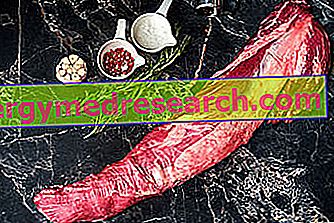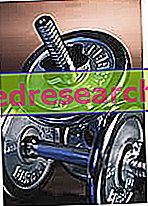Premise
We have previously analyzed the general characteristics of the hawthorn, tracing a chemical identikit of its phytocomplex after having outlined a precise and meticulous botanical profile.

Hawthorn: pharmacokinetics
Before describing the pharmacokinetics of the active ingredients, it is worth remembering that among the most important properties attributed to the drug is the cardiotonic, positive and antiarrhythmic inotrope.
After this clarification, we can describe the pharmacokinetics.
It has been observed that proanthocyanidins are highly bioavailable molecules and are distributed in the heart tissue in an amount estimated at around 30% of the dose administered per os. These active molecules are able to perform their properties quite quickly: in fact, they are first absorbed by the intestinal tissue, after which they reach their maximum blood level in just 40-45 minutes, extending their activity for 5 hours.
The mechanism of action of proanthocyanidins is very different from that of flavonoids and other molecules that make up the phytocomplex, absorbed in significantly lower quantities in the intestine, as well as being much less bioavailable.
Properties and biological activity
In summary, the main properties attributed to hawthorn are:
- Cardiotonic: positive inotropic, negative batmotropic
- Coronary vasodilators
- antisclerotic
- Sedative, anxiolytic and antisapasmodic
- antihypertensive
- lipid-lowering agents
Given the intertwining of active molecules described above, it is clear that the hawthorn phytocomplex is capable of carrying out many properties.
- Cardiotonic property of hawthorn
Although the hawthorn is considered primarily an anxiolytic and sedative drug, the cardiotonic action is also one of its main properties: the drug increases the contraction capacity of the heart muscle (positive inotropic property) and, at the same time, slows down the transmission of the impulse nervous, therefore also the contraction of the heart in pumping blood from the atria to the ventricles (negative batmotropic property).
Precisely for this reason, hawthorn extracts have long been used as an elective phytotherapeutic therapy in the treatment of medium-sized cardiac disorders, in coronary insufficiency, mild bradycardia disorders, and myocardial insufficiency (moderate form).
In addition to acting at the cardiac level with positive inotropic and negative batmotropic action, the hawthorn extract has negative chronotropic properties (reduction in heart rate) and positive dromotropic (increase in atrio-ventricular conduction).
- Coronary vasodilatory properties of hawthorn
We have seen that hawthorn is used for coronary vasodilatory properties: in fact, the active ingredients of the phytocomplex stimulate the release of the smooth vascular musculature of the coronary arteries, so that there is an expansion of the vessels and a decrease in peripheral resistance. According to this, it is clear that hawthorn is widely used to improve cardiac performance.
Generally, to take advantage of the cardiotonic properties of hawthorn, in herbal medicine we recommend mother tincture or fluid extract: it is good to specify, however, that these preparations are not effective in case of acute pathologies; rather, their use is directed towards mild heart failure (not requiring digitalis treatment) and in recovery prophylaxis following cardiac / coronary damage.
- Antisclerotic properties of hawthorn
Hawthorn extract is also used in the treatment of atherosclerosis: generally, the drug excellently performs this function in synergy with other extracts, together with other phytocomplexes. In experimental models, hawthorn, by reducing peripheral resistance, is ideally able to prevent atherosclerosis.
- Sedative, anxiolytic and antisapasmodic properties
The anxiolytic-sedative property is probably the best recognized to hawthorn: since time immemorial, the action of the drug at the level of the central nervous system has been exploited to eliminate, reduce or, still, calm anxiety, irritability or, more general, to control the emotional component of particularly agitated or anxious individuals. Reflexively, the administration of hawthorn extracts improves the quality of sleep, favoring a peaceful rest separated from anxiety, anxiety and difficulty in falling asleep.
In order to counteract the typical symptoms of the anxiety syndrome, it is recommended to administer hawthorn extract in the form of herbal teas or decoctions in association with other anxiolytic-sedative drugs, which enhance the activity itself: particularly valerian, lemon balm, chamomile, passion flower.
Probably, hawthorn carries out its anxiolytic and moderately hypnotic activity also thanks to flavonoids, to which a possible benzodiazepine-like activity is attributed.
Among the various scientific demonstrations carried out to ascertain the anxiolytic properties of the plant, one of them has highlighted the strengthening of this precise activity of the hawthorn in association with ballota, cola and valerian.
- Antihypertensive property of hawthorn
The antihypertensive action excellently performed by the hawthorn seems to be closely linked to the vasodilator-coronary property: the antihypertensive action of the drug essentially acts at the level of dilated vessels by direct action.
To give a practical demonstration of the hypotensive abilities carried out by the hawthorn, an example is reported: on average, after taking extracts of hawthorn, subjects suffering from hypertension with values of 160 and 150 mmHg (respectively, systolic and diastolic pressure), record a significant reduction in blood pressure, up to 89 and 85 mmHg.
- Lipid-lowering property of hawthorn
In the light of recent studies, interesting scientific discoveries have emerged concerning the properties of hawthorn: it seems, in fact, that the drug is able to carry out its effect also on cholesterolemia and lipidemia. In particular, this activity has been demonstrated on animal models (rats) fed a high-calorie diet.
The lipid-lowering activity associated with hawthorn seems to be particularly indicated for the elderly person suffering from both hypercholesterolemia and hyperlipidemia associated with cardiac dysfunction.
Toxicity and precautions for use
Clearly, the administration of hawthorn extracts is banned for those subjects sensitive to one or more phytocomplex molecules.
In literature, no major cases of hawthorn toxicity have been reported: in fact, the administration, even when prolonged, of extracts of this drug seems to be quite safe, except for those who take, at the same time, drugs with direct action on the heart.
Monitoring or supervision of the patient is recommended when taking extracts of hawthorn together with beta-blockers, substances derived from digitalis or drugs with bradicardising action, in order to avoid an enhancement of the final effect.
Cases of acute and subacute toxicity linked to the administration of hawthorn are rare.



